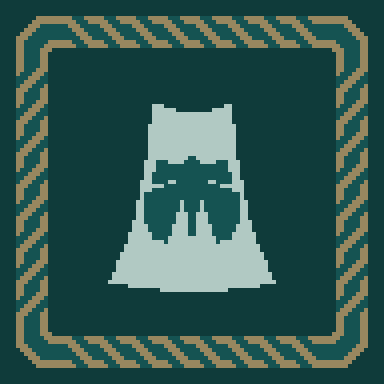Sable on Argent, a mirror of Her grace resplendent on the Lune.
The
Elytra forms only one part of the traditional travel garb of a monk of the
Restored Orthodoxy, but it is for most people the most recognisable. The most common form of an
Elytra is that of overlapping scales of cloth sewn onto the outward face of a traveler's cloak. These scales are cut from wool or linen fabric, some of which are dyed black or dark grey and others are bleached white or light grey, and arranged in a pattern that resembles the black silhouette of a moth on a white background. This pattern closely resembles similarly shaped and coloured features on the face of the moon, and is therefore associated with the mythical
Moth-In-Lune of ancient worship.
Large numbers of
Elytra were destroyed or lost and scattered during the violence of
The Apostasy, only to recently start turning up again in various unlikely places.
A natural philosopher would pedant that the
Elytra is misnamed, and that the term "Elytra" refers only to the hardened protective wingcases of a beetle and that it should not be applied to the wings of a moth. Despite this, this usage continues.
Variations
Quilted Elytra
A
Quilted Elytra is a winterized version of the common
Elytra. In the place of overlapping cloth scales, this version is constructed from quilted panels with the purpose of retaining the wearer's body warmth during the months of bitter Wexen winter.
Gamboised Elytra
A
Gamboised Elytra is a third, more sturdy version of the common
Elytra. Its overlapping cloth scales are comprised entirely from stiff panels of linen gambeson two dozen layers thick that are surprisingly resistant to sword cuts and in some cases arrows shot from longbows. It first came to prominence during the violence of the Apostasy, when warrior-priests would wear
Gamboised Elytra on the field of battle. It is rare to see one outside of an Apostate Order.




Comments